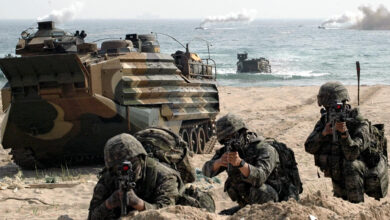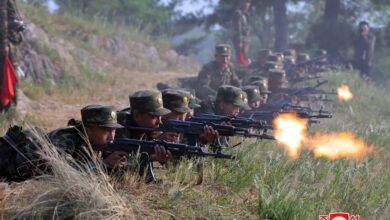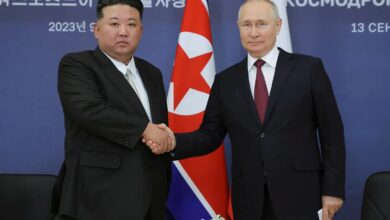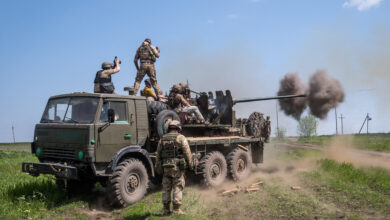North Korea Plans ‘Monster’ Missile Launch by April: Analysts
North Korea has been using satellite subterfuge to test parts of a so-called “monster” missile, analysts say, as it gears up for a sanctions-shattering launch ahead of a key domestic anniversary.
Pyongyang has conducted a record nine weapons tests so far this year, in what experts see as an effort to work through a laundry list of strategic weapons set out by leader Kim Jong Un.
One top priority is an intercontinental ballistic missile (ICBM) that can carry multiple warheads — the Hwasong-17, dubbed a “monster missile” and first unveiled at a parade in October 2020.
It has never been test-fired — but Washington said Thursday Pyongyang had recently tested parts of it disguised as a satellite.
North Korea has been observing a self-imposed moratorium on testing long-range and nuclear weapons, but with talks stalled and sanctions still in place, it seems close to tearing it up.
“I think the moratorium is as good as over. We should expect to see a return to ICBM testing,” said US-based security analyst Ankit Panda.
The tests of purported “reconnaissance satellite” components on February 27 and March 5 were likely the Hwasong-17, possibly the technology to “carry and deliver multiple warheads,” he said.
“North Korea hasn’t demonstrated the latter capability before, even if it has tested ICBMs capable of ranging the United States three times,” he said.
Cycle of Escalation
North Korea’s renewed determination to test an ICBM comes at a delicate time in the region, with a new, more hawkish president, conservative Yoon Suk-yeol, set to take control in South Korea.

Yoon — who has threatened Pyongyang with a pre-emptive strike and promised to tell “rude boy” Kim to behave — looks set to take a hard line with the North after five years under dovish liberal President Moon Jae-in.
But this approach is likely to lead to a cycle of escalation that will ratchet up tensions, Yang Moo-jin, a professor at the University of North Korean Studies, told AFP.
Launches will be met with fresh sanctions, to which “Pyongyang will likely respond by test-firing more weapons.”
North Korea paused its tests to “make room for diplomacy and avoid further sanctions,” but always kept working on diversifying its missiles, said Leif-Eric Easley, a professor at Ewha University in Seoul.
Eventually, “in order to ensure accuracy and reentry capability, such weapons need to be tested,” he said.
Masking these as satellite tests can help them to “buy time” to develop what they need to launch an ICBM, said Ahn Chan-il, a North Korean studies scholar, told AFP.
And Pyongyang has a clear deadline: North Korea will mark the 110th anniversary of the birth of founding leader and Kim’s grandfather Kim Il Sung in April and likes to mark key domestic anniversaries with military parades or launches.
“It’s very likely that North Korea is going to test-fire an ICBM on April 15 for Kim Il Sung‘s birthday,” Ahn said.
Day of the Sun
By unmasking the purported satellite tests as an ICBM, Washington and Seoul are sending a clear warning to Pyongyang not to go ahead, said Hong Min, a researcher at the Korea Institute for National Unification.
But if Pyongyang wants “to master re-entry technology,” it needs to conduct multiple tests, he said.
By using the cover of “space rockets” it is hoping to “minimize backlash from the international community,” he said, adding he agreed the next key launch will be around April 15 and that more tests could follow.
North Korea’s Kim was on Friday reported having visited the country’s satellite test center and called for it to be modernized and expanded.
But some analysts said that the US and South Korea were making too much of the recent tests, with Pyongyang entitled to develop peaceful satellite technology.
“If you are prohibited from having a kitchen knife just because there is a risk of you using it to kill someone, what would you do in the kitchen when you need to cook?” Cheong Seong-chang of the Center for North Korea Studies at the Sejong Institute told AFP.











